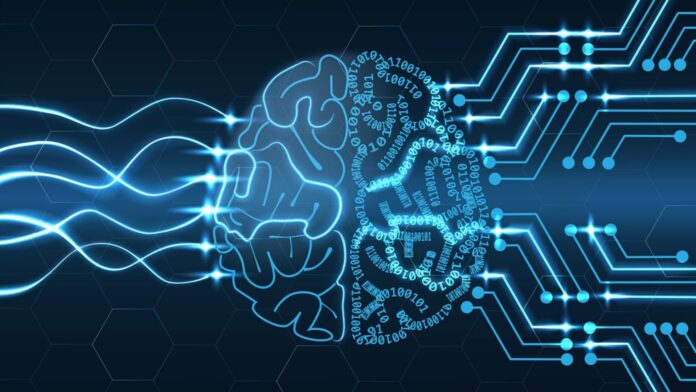Brain-computer interfaces monitor actions performed, remove information from them, and convert that information into tasks that replace, modify, extend, add, or improve human actions.
BCIs can be used to replace lost functions such as speech and motion. They can regain control of the body by activating nerves or muscles to move the arm, for example. BCI was also used to improve competence, such as educating individuals to increase performance in the absence of road interdictions. BCIs can also improve performance, such as alerting a sleepy driver to get out of the car. Finally, a BCI can be used to satisfy normal body movements such as the third hand.
BCIs use a variety of methods to monitor activity. The electrodes monitor the use of electrodes implanted invasively on or on top of the system, or non-invasively on the head, in most BCIs. Some BCIs are based on non-invasive measurements of metabolic activity, such as functional magnetic resonance imaging (fMRI).
Mental Handwriting to Text on Screen
Scientists are looking for different methods to allow people with disabilities to communicate with their minds. The nearness and speed of a return to a time-successful method of your own revelation: writing.
The researchers showed that the brain works in trying to make letters for the first time. The researchers used an algorithm to recognize letters as he tried to write them while working with a paralyzed volunteer who had machines implanted in his brain. The text was displayed on real-time visualization by the program.
According to the study by author Krishna Shenoy, a researcher at Stanford University Howard Hughes Medical Institute who co-worked with Jaimie Henderson, a Stanford neurosurgeon.
According to Shenoy and his colleagues, the study participant wrote 90 letters per minute while trying to handwrite, and more than four times the initial signal for typing with this “brain-computer together “.
According to Jose Carmena, an engineering professor at the University of California at Berkeley, who did not participate in the study, this method and others like it have the potential to benefit people and many types of defects. “It’s a progressive battle in the field,” he added, despite early polls.
According to Carmena, brain-computer communication transforms thoughts into actions. “This article is a very good example: communication completes the writing process and generates activity.”
Communication reinforced by thoughts
When a person’s ability to move is impaired due to an accident or illness, the brain’s neuronal activity is to walk, get a cup of coffee, or speak a remaining sentence. Researchers can use this exercise to help patients who are incapacitated due to paralysis or disability.
The requirement varies depending on the type of defect. Some people who hurt their hands can use a PC and talk about software and other programs. Other methods to help people communicate have been developed by scientists for people with speech difficulties.
Shenoy’s team has spent the last few years studying brain activity, including a speech in hopes of rehearsing it. They also created a method for individuals with planting machines to raise a reference on the page using their imagination in connection with a manual effort to execute. Users can type around 40 letters per minute, handwriting and printing letters this way, and double the average typing speed and computer-aided design (BCI).
No one just looked at the writing. Frank Willett, a forensic pathologist in Shenoy’s lab, questioned whether the brain manipulates the brain by placing the pen on the paper. “We want to find new ways for everyone to communicate quickly,” he said. He was also deceived by the intention to try something new.
The researchers worked with the participant in the clinical trial of BrainGate2, which evaluates the safety of BCI to transmit information directly from the brain to a computer. (Leigh Hochberg, a neurosurgeon, and neurologist at Massachusetts General Hospital, Brown University, and Providence VA Medical Center, is the director of the study.) Henderson placed two small zones in the area of the brain that controls hand and arm, allowing the user to operate a robotic arm or a button on the monitored computer, the action of his or her own controlled arm.
The case jean was 65 at the time of the study, your body was paralyzed from the neck down due to a knee injury. The machine gunner observed the simulation of his brain made on each letter, using information collected by sensory cell sensors while the man was thinking about the text. The gentleman was able to rehearse sentences and answer questions at a rate comparable to one of his peers playing on a smartphone using this method.
A new base is implemented
Shenoy’s team plans to use handwritten efforts for text input as part of a larger program to incorporate point-and-click simulations similar to what is seen in today’s smartphones, as well as and trying to find sounds. He explained: “Having these two or three ways and switching between them is what we are used to.”
The team will work with a person who cannot speak, such as someone with amyotrophic lateral sclerosis, a brain disease that causes a lack of movement and voice, according to Shenoy.
Henderson said the new method could be useful to those diagnosed with palsy in a variety of diseases. Among them was Jean-Dominique Bauby, author of The Diving Bell and the Butterfly, who suffered a stroke. Henderson wrote: “He was able to create this beautiful and fun book by carefully choosing one character at a time, using eye movements.” “Try to imagine what he would have done with Frank’s writing!” shout the narrator.
Follow and connect with us on Facebook, LinkedIn & Twitter

